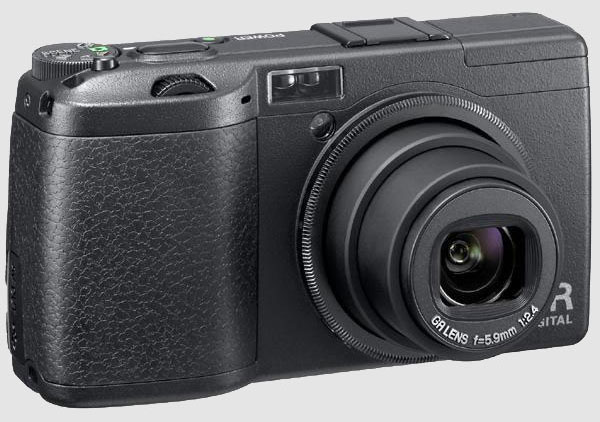A rake of new cameras
30th August 2007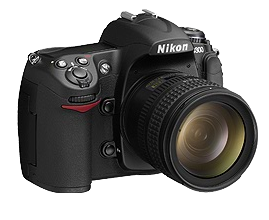 The websites of Amateur Photographer and Tech.co.uk are good places to find out what is happening in the world of digital cameras, which is just as well given the recent camera launching frenzy. It all seemed to start off with Canon’s EOS D40 and EOS 1Ds Mark III. The former seemed to be a case of playing catch up but I still think that Canon should have used the opportunity to pull ahead, at least in the megapixel stakes; Sony is working on a 12 megapixel offering and could be about cause of 12 megapixel sensors becoming the norm for consumer digital SLR’s like they did with the 10 megapixel level. I realise that megapixels aren’t everything but it has seemed to go like that thus far. Playing catch up doesn’t apply to the 1Ds Mk III with its having a monster sensor resolution of 21 megapixels and, needless to say, the improvements to the favoured DSLR of landscape photographers don’t stop there. Nikon were also in the fray with new 12 MP offerings: D300 for the enthusiast and D3 for the professional. The sensor in the latter interestingly features a sensor that sits between full frame and the more usual APS-C sizes. Panasonic have also announced a new DSLR but a number of manufacturers have new digital compacts on the market too. All of the previous makers have something as does Olympus. It was amazing to see this all happening at once but I suppose that’s how it goes. IFA has been on over the last week but some launches preceded this; it’s usually something big like Photokina that results in this sort of thing…
The websites of Amateur Photographer and Tech.co.uk are good places to find out what is happening in the world of digital cameras, which is just as well given the recent camera launching frenzy. It all seemed to start off with Canon’s EOS D40 and EOS 1Ds Mark III. The former seemed to be a case of playing catch up but I still think that Canon should have used the opportunity to pull ahead, at least in the megapixel stakes; Sony is working on a 12 megapixel offering and could be about cause of 12 megapixel sensors becoming the norm for consumer digital SLR’s like they did with the 10 megapixel level. I realise that megapixels aren’t everything but it has seemed to go like that thus far. Playing catch up doesn’t apply to the 1Ds Mk III with its having a monster sensor resolution of 21 megapixels and, needless to say, the improvements to the favoured DSLR of landscape photographers don’t stop there. Nikon were also in the fray with new 12 MP offerings: D300 for the enthusiast and D3 for the professional. The sensor in the latter interestingly features a sensor that sits between full frame and the more usual APS-C sizes. Panasonic have also announced a new DSLR but a number of manufacturers have new digital compacts on the market too. All of the previous makers have something as does Olympus. It was amazing to see this all happening at once but I suppose that’s how it goes. IFA has been on over the last week but some launches preceded this; it’s usually something big like Photokina that results in this sort of thing…
Update: I have discovered since the Nikon’s D3 has a sensor sized in the full frame domain. It might be 36mmx23.9mm rather than 36mmx24mm but the FX format comes extremely close and the advent of full frame DSLR’s being purveyed by a number of manufacturers may be upon us.
Taking a camera on a walk…
24th July 2007On Saturday, I happened to be in Jessops and overheard a salesman emphatically state that you don’t buy a camera for its specifications but for the photos that it produces. While his tone of voice was a touch condescending and he seemed to be putting down a DSLR, he was essentially right. Nevertheless, the specifications do help you get the images and they have to be seen in that light. For instance, having on-board sensor cleaning may save you from having either to clean the thing yourself or send the camera away for the professionals to do the needful, a much safer option in my view. And there may be occasions where image stabilisation is very useful, low light wildlife photography for instance. Yes, there are features that I consider surplus to requirements, like live viewing and movie capture and that is very much due to my buying cameras to make photos. The salesman in question would surely have agreed…
Sunday saw me head to the Lakeland Fells for some walking and a spot of testing of my new Pentax K10D. The details of the walk itself are not for here but for my hillwalking blog and that is where you will find them. While making my way from Crewe to Windermere, I perused the manual looking particularly for information pertaining to functions that I actually use, I should really have done this beforehand, but distractions meant that I hadn’t got around to it. I had to wade through something designed for a new SLR user before I got to what I consider the important stuff. Though this may be a bit irritating, I can understand and accept why they do it this way; we were all new users once and they are hardly likely to want to know about things like aperture priority, raw file capture, ISO control and such like straight away.
What do I think of it then? Let’s start with first impressions. It is definitely smaller than the Canon EOS 10D it accompanies in my possession. That said, it is not too small and there is a decent grip hosting the shutter release button and the camera on/off switch. It also feels well-assembled and reassuringly weighty, an important consideration given that it will see the outdoors a lot. A discussion of the features most relevant to me follows.
On the subject of switching on and off, the camera is set to go into a sleep mode after a second of inactivity but it reawakens quickly when needed, the trigger being half-depression of the shutter release button. In fact, the camera does reawaken much faster than my Canon as it happens and where the delay is a constant source of some irritation. It might sound strange but the on/off switch is also used to activate the depth of field preview, something that no SLR should not have. The location may be unusual, but maybe the designers thought that having shutter release and depth of field preview next to each was a logical way to do it. From a camera operation point of view, there is certainly something to that way of thinking. Behind the shutter release, you’ll find a screen that is a reminder of film SLR’s and it conveys information such as battery life, number of exposures remaining on the card and exposure details (aperture & shutter speed).
Staying on the subject of screens, the one on the back of the camera is larger than that on the Canon. As is customary for these, it allows replay of photos taken and access to the various menus required to control the camera’s operation. In comparison to the Canon, which is essentially a one menu affair with a thumb wheel controlling scrolling and an OK button at its centre to perform operations, the Pentax has a more elaborate system of submenus: one each for recording, playback and set-up. The playback menu is where I found the setting that makes the camera highlight areas of underexposure and overexposure during image playback. This is something that I missed with respect to the Canon until I happened upon it. Camera cleaning is located on the set-up menu and the camera is now set to clean the sensor every time that it is turned on. Why this is not enabled by default is a little beyond me, but the designers might have thought that a vibration from the camera on turning it on could have resulted in a load of support calls. The same submenu also hosts memory card formatting. The recording submenu is where I set the camera to deliver RAW DNG files, an Adobe innovation, rather than the default JPEG’s. There are other options like RAW PEF files, Pentax’s own format, or RAW and JPEG simultaneously, but my choice reflects my workflow in Photoshop Elements; I have yet to stop the said software editing the DNG files, however. With all these options, it is fortunate that there is a navigation wheel whose operation uses arrow buttons to get about. While on the subject of the back screen, there are further settings that are accessed with the FN button rather than the Menu one. These include ISO, white balance, shooting mode (single, continuous, timed and so on) and flash. The only setting that I changed out of this lot was to set the ISO to 400; I prefer to feel that I am in control.
Returning to the camera’s top plate, the exposure mode dial is on the left-hand side, which is no hardship to me as this is in the same place as on the Canon. There are no scene modes, but the available exposure modes are more than sufficient: fully automatic, program, sensitivity priority, shutter priority, aperture priority, shutter and aperture priority, manual, bulb and external flash synchronisation. A few of these need a spot of explaining. Sensitivity priority is no one on me but it is a consequence of the ability of DSLR’s to offer a range of ISO settings; the aperture and the shutter speed are varied according to the ISO setting. Shutter and aperture priority is like manual exposure and is the inverse of sensitivity priority: set both aperture and shutter speed, and the camera will vary the ISO setting. Both of the foregoing assume that you let the camera set the ISO but my setting the thing myself may have put paid to these functions. Shutter priority and aperture priority are, as far as I can tell, their usual selves. For all exposure modes, the thumb wheels at the front and back of the shutter release handgrip set apertures and shutter speeds where appropriate and this arrangement works well.
Mounting on the same column as the exposure dial the metering mode selector and here is where I see more options than my Canon, which has only full and partial multi-segment metering. With the Pentax, you get spot and centre-weighted metering in addition to the default multisegmented variety. Spot metering is definitely very useful but capturing the reading is a multitasking affair: half pressing the shutter button and fulling pressing the AE lock one at the same time. In contrast, Canon’s partial metering is a more convenient single button operation meter and retain facility. Pentax would do well to learn from this.
The focussing mode selector is found on the left of the body next to the lens coupling. I am used to having this on the lenses themselves, so this is a new arrangement for me and one to which I can easily become accustomed. In fact, it is easy to find it while composing a picture. The modes themselves are manual focus, one-time autofocus and continuous autofocus; the last of these is for focussing on moving objects.
I could go further, perhaps overboard, with a discussion of the features of this camera but I draw a line at what’s here. Yes, it is useful to set the focussing point and activate image stabilisation but the above are what matter to me and its performance in the photo making department is the most important aspect. That neatly brings me to my appraisal of how it performs. With inspection of the first few images on the review screen, I was a little disappointed to see how dark the foreground was in comparison to the sky. When I brought everything home as I always do, I found that things weren’t necessarily as they appeared in the field. The Pentax more usefully offers histogram review and highlighting of any areas that are either underexposed or overexposed. It is these functions that I will be using in reshooting decisions while out and about with the Pentax and the same can be said for how I currently use the Canon. In fast changing lighting, the AE lock technique was a bit irritating but I am certain that I will get better at it. The autofocus doesn’t always lock onto the subject, especially in tricky lighting, so manual focussing is a definite necessity and is more useful more for landscape photography, in fact. Nevertheless, the autofocus did do well most of the time and my Sigma lenses have done worse things on me. All in all, I am happy with the K10D and will continue to use it. I have got some decent photos from my excursion and that, as that Jessops salesman would agree, is the main point of a camera.
Amateur Photographer reviews…
19th July 2007Amateur Photographer seem to have had a run of reviews recently. First off were the Olympus E-410 and E-510 that they seemed to like. Then, they moved onto the Ricoh Caplio GX100 and they seemed to like that too, though they did say that quality wasn’t up to SLR standards. But then again, it is a compact and that might be expecting a bit too much. This week, Paint Shop Pro comes under the spotlight as does Epson’s V350 scanner. I have yet to read these but I have been engaging in a spot of equipment acquisition anyway. My CanoScan 5000F scanner has been usurped by Epson’s Perfection Photo 4490 and very happy I am with it too. The quality of the scans that I have been doing of prints has been good and the presence of an on/off switch is a creditable one. None of the other scanners that I have had possessed it and having to plug something in and out from the power socket is inconvenient to say the least. I have also gone and got myself a new DSLR. Seeing Pentax’s K10D going with a 18-55 mm lens for £499 at Jessop’s overrode my better reason and put paid to ideas of purchasing any other electronic goods for the rest of this year. It’s an award-winning gadget and Photography Monthly’s Will Cheung seemed to get on fine with it. Which Digital Camera said it was heavy but it has to stand up to use in the great outdoors. The sensor may be a 10 megapixel affair so this will be an upgrade to my Canon EOS 10D; that has a sensor in need of clean right now (I plan to get it done by the professionals) and every time that I want to use an image that it has made, Photoshop’s healing brush has to be pressed into service. Pentax does boast about all of the seals that it has added to the K10D, a good thing if they cut down on the dust entering the camera. And if dust does get in, the sensor cleaning feature will hopefully see it off from the photos. Image stabilisation, another value adding feature, is also there and may prove interesting. Strangely, there’s some motion picture capture as well and I hope that it doesn’t get the EU coming after me to collect retrospective camcorder duty. In any case, it’s not a feature that I really need and the Live View functions on the equivalent Olympus offerings fall into the same category anyway. It’ll be interesting to see how the K10D performs and it’s a change from the Canon/Nikon hegemony that seems to dominate digital photography these days.
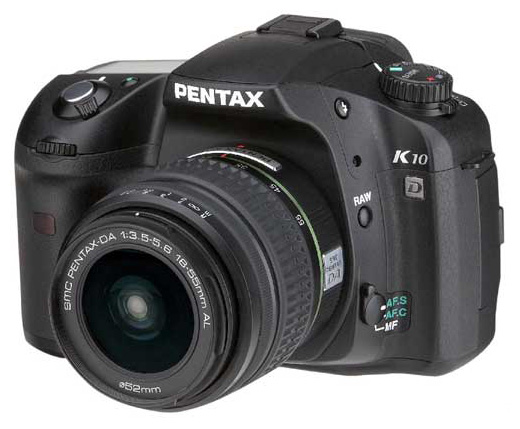
Update: I have since perused the current issue of Amateur Photographer and seen that Paint Shop Pro suffered from performance issues on computers that worked fine with Photoshop. Otherwise, it compared well with Adobe’s offerings even if the interface wasn’t seen to be as slick. Epson’s V350 was well received though it was apparent that spending more got you a better scanner but that’s always the way with these things.
Another Olympus E-system review
27th June 2007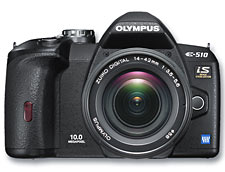
I don’t buy Amateur Photographer much these days but sight of a review of Olympus’ E-410 and E-510 SLR’s got a copy into my possession. Amateur Photographer review features are usually comprehensive and this was no exception; there was none of the vitriol directed towards the Live View feature by Practical Photography, a defining feature of what i consider a lop-sided and none too useful review. The verdict was a positive one in the main with the E-510 getting the nod over the E-410 because it fared better on the usability side of things. Image quality, my major concern, was said to be impressive with only dynamic range counting against the results. The Live View feature didn’t attract the harsh commentary devoted to it by Practical Photography. Following this review, I have to say that the E-510 does tempt me with its combination of good image quality, dust removal and image stabilisation.
A tale of two reviews
21st June 2007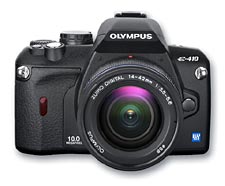
Recently, I encountered two very different reviews of the newly launched Olympus E-410 DSLR in Which Digital Camera? and Practical Photography, respectively. The review in the former was a positive affair, though it was a first look at the camera, but the impression formed by the latter reviewer was lukewarm in nature.
The camera features a live electronic viewer on its back, a carry over from digital compacts and a feature that I may never use. While that might be the unique selling point for the camera, good image quality and the fact that it possesses a cleaning mechanism for its sensor are of much more interest to me.
Ironically, the Practical Photography review spent most of its time talking about the very feature of the camera that interests me the least, with only a scant mention of quality; to be frank, I didn’t find it a very useful appraisal even if the electronic viewfinder may not be all that it’s cracked up to be and it’s picture quality and camera handling that ultimately matter to the photography enthusiast.
In contrast, Which Digital Camera? seemed to give a more rounded view and proved to be of more interest and I’d be interested to see what the likes of Photography Monthly and Amateur Photographer might have to say. Incidentally, I also shall be awaiting the Which Digital Camera? appraisal of Ricoh’s Caplio GX100 in their next issue.
Camera tales
20th January 2007Anyone who has ever been on HennessyBlog will know that I enjoy walking in the countryside and that I always have a camera with me when I do. Like many digital SLR owners, I am beginning to see the tell-tale spots in my photos that are caused by a dirty sensor. And it isn’t that I am continually changing lenses either: I rarely remove the Sigma 18-50 mm DC zoom lens that I use with the camera. Rather than trusting myself with the cleaning (I have had a go already without much success), I am giving serious consideration to letting the professionals take care of my Canon EOS 10D, my only digital camera. I have already been quoted something of the order of £35 by a Canon service centre not far from me and am seriously considering taking them up on the offer.
Of course, sending it away to them means that I will have to forego the ability to include photos with posts on HennessyBlog describing my walks in the kind of timescale to which I have become accustomed; of course, this is where digital really scores. I will still have a camera with me as film remains my mainstay, even in this digital age. The camera in question is another Canon, an EOS 30 that I acquired used from Ffordes Photographic. While taking a recent peek at their website, I have just spied a used EOS 1V going for £399, a song for what remains Canon’s top of the range film SLR. Yes, I am tempted but I must stay real. In fact, I did not pay full price for my EOS 10D. That was part of the run-out stock that 7dayshop.com were selling off at next to half of the EOS 10D’s original asking price in the wake of its being superseded by the EOS 20D (itself since replaced by the EOS 30D: digital is a fast-moving world).
Sending a camera away for attention is not new to me as I also acquired a used Minolta X-700 manual focus SLR, again obtained from Ffordes, and that needed a spot of maintenance after a year in my possession. There was a problem with the shutter that cost me £75 to get Minolta to fix. Now that Minolta as a camera maker is no more, I was wondering who would attend to it in the future. That question was answered by a recent look on the web: in the UK it is JP Service Solutions, a division of Johnson’s Phototopia. Konica Minolta retain this information on their website. Konica Minolta’s failure to capitalise effectively on the digital revolution in its early days, particularly in the SLR area where they gifted their competitors a massive head start, cost them their future in the photographic business and now Sony continues the mantle, a sad end to one of camera manufacturing’s great innovators.
Returning to my digital-less dilemma, I suppose that I could get another digital for backup duty; I have to admit that a DSLR is a bulky contraption to be carrying in airline luggage. The camera that has made it onto my wish list is Ricoh’s GR Digital, a highly regarded offering that follows in the great tradition of its film forbears, the GR 1 and GR 21. Given that my first 35 mm camera was a Ricoh, and I have it still, this would be a case of returning to my roots. Of course, having it on a wish list is very different from having it on the to-do list and finances will certainly dictate if the purchase is made, though a finance deal offered by Warehouse Express does make it more accessible. Maybe some day…
